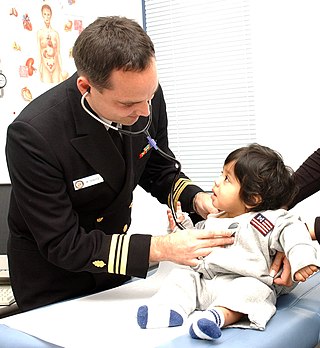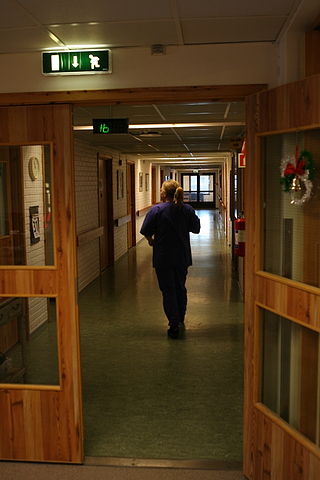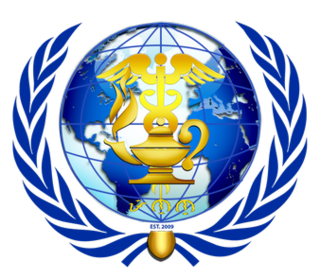
The AIDS epidemic, caused by HIV, found its way to the United States between the 1970s and 1980s, but was first noticed after doctors discovered clusters of Kaposi's sarcoma and pneumocystis pneumonia in homosexual men in Los Angeles, New York City, and San Francisco in 1981. Treatment of HIV/AIDS is primarily via the use of multiple antiretroviral drugs, and education programs to help people avoid infection.

Human capital flight is the emigration or immigration of individuals who have received advanced training at home. The net benefits of human capital flight for the receiving country are sometimes referred to as a "brain gain" whereas the net costs for the sending country are sometimes referred to as a "brain drain". In occupations with a surplus of graduates, immigration of foreign-trained professionals can aggravate the underemployment of domestic graduates, whereas emigration from an area with a surplus of trained people leads to better opportunities for those remaining. But emigration may cause problems for the home country if the trained people are in short supply there.
The H-1B is a visa in the United States under the Immigration and Nationality Act, section 101(a)(15)(H), that allows U.S. employers to employ foreign workers in specialty occupations. A specialty occupation requires the application of specialized knowledge and a bachelor's degree or the equivalent of work experience. The duration of stay is three years, extendable to six years, after which the visa holder can reapply. Laws limit the number of H-1B visas that are issued each year. There exist congressionally mandated caps limiting the number of H-1B visas that can be issued each fiscal year, which is 65,000 visas, and an additional 20,000 set aside for those graduating with master’s degrees or higher from a U.S. college or university. An employer must sponsor individuals for the visa. USCIS estimates there are 583,420 foreign nationals on H-1B visas as of September 30, 2019. The number of issued H-1B visas have quadrupled since the first year these visas were issued in 1991. There were 206,002 initial and continuing H-1B visas issued in 2022.

Tropical medicine is an interdisciplinary branch of medicine that deals with health issues that occur uniquely, are more widespread, or are more difficult to control in tropical and subtropical regions.

SUNY Downstate Health Sciences University is a public medical school and hospital in Brooklyn, New York. It is the southernmost member of the State University of New York (SUNY) system and the only academic medical center for health education, research, and patient care serving Brooklyn's 2.5 million residents. It is the only state-run hospital in New York City. As of Fall 2018, it had a total student body of 1,846 and approximately 8,000 faculty and staff.

A nurse practitioner (NP) is an advanced practice registered nurse and a type of mid-level practitioner. NPs are trained to assess patient needs, order and interpret diagnostic and laboratory tests, diagnose disease, prescribe medications and formulate treatment plans. NP training covers basic disease prevention, coordination of care, and health promotion.

A nursing shortage occurs when the demand for nursing professionals, such as Registered Nurses (RNs), exceeds the supply locally—within a healthcare facility—nationally or globally. It can be measured, for instance, when the nurse-to-patient ratio, the nurse-to-population ratio, the number of job openings necessitates a higher number of nurses than currently available, or the current number of nurses is above a certain age where retirement becomes an option and plays a factor in staffing making the workforce in a higher need of nurses. The nursing shortage is global according to 2022 World Health Organization fact sheet.
Filipino Austrians are Austrians of full or partial Filipino descent and are part of the so-called Overseas Filipinos. When excluding Afghan, Iraqi and Syrian refugees, Filipinos make up the fourth largest group of Asians within Austria, behind Iranian, Chinese and Indian people and form the largest Southeast-Asian community in the country. The majority of them live in Vienna, the capital of Austria.

Access to healthcare services in the Philippines is marked by significant inequities, particularly affecting poor communities. These disparities are reflected in both access to services, health outcomes, and the effects of climate change which exacerbate the incidences of infectious diseases. One major challenge is the varying financing for local government units, leading to differences in the benefits packages of insurance plans and difficulties in accessing public health services. The decentralization of healthcare responsibilities from the federal government to local governments has, in some cases, increased local authority but has also made certain communities vulnerable to a lack of access to basic services.
Nursing in the Philippines is provided by professionally trained nurses, who also provide a quarter of the world's overseas nurses. Every year, some 20,000 nurses work in other countries. Nurses in the Philippines are licensed by the Professional Regulatory Commission. The advance of nursing in the Philippines as a career was pioneered by a culture of care that is intrinsic in the Filipino people. This began before Spanish colonization.
In South Africa, private and public health systems exist in parallel. The public system serves the vast majority of the population. Authority and service delivery are divided between the national Department of Health, provincial health departments, and municipal health departments.
Discrimination against people with HIV/AIDS or serophobia is the prejudice, fear, rejection, and stigmatization of people with HIV/AIDS. Marginalized, at-risk groups such as members of the LGBTQ+ community, intravenous drug users, and sex workers are most vulnerable to facing HIV/AIDS discrimination. The consequences of societal stigma against PLHIV are quite severe, as HIV/AIDS discrimination actively hinders access to HIV/AIDS screening and care around the world. Moreover, these negative stigmas become used against members of the LGBTQ+ community in the form of stereotypes held by physicians.
The labor migration policy of the Philippine government allows and encourages emigration. The Department of Foreign Affairs, which is one of the government's arms of emigration, grants Filipinos passports that allow entry to foreign countries. In 1952, the Philippine government formed the Philippine Overseas Employment Administration (POEA) as the agency responsible for opening the benefits of the overseas employment program. In 1995, it enacted the Migrant Workers and Overseas Filipino Act in order to "institute the policies of overseas employment and establish a higher standard of protection and promotion of the welfare of migrant workers and their families and overseas Filipinos in distress." In 2022, the Department of Migrant Workers was formed, incorporating the POEA with its functions and mandate becoming the backbone of the new executive department.
Nursing in Kenya began in 1908 and was conducted without a formal framework until 1950. Over the decades, with demand for healthcare providers increasing due to marked growth in the population of Kenya, training programs were implemented.

The demographics of Filipino Americans describe a heterogeneous group of people in the United States who trace their ancestry to the Philippines. As of the 2020 Census, there were 4.4 million Filipino Americans, including Multiracial Americans who were part Filipino living in the US. Filipino Americans constitute the third-largest population of Asian Americans, and the largest population of Overseas Filipinos.

The Alliance of Young Nurse Leaders and Advocates, also known as AYNLA, is a professional organization in the Philippines advocating for the achievement of the United Nations Millennium Development Goals (now Sustainable Development Goals), Universal Health Care, and advancement of nurses' rights and welfare. It was established in the year 2009 and registered with the Philippine Securities and Exchange Commission in 2010. The headquarters of the organization is currently located at Villaruel Street, in Pasay.
The H-1A visa was a visa that was previously available to foreign nationals seeking temporary employment in the United States. These visas were made available to foreign nurses coming into the United States to perform services as a registered nurse in areas with a shortage of health professionals as determined by the Department of Labor. The creation of this visa was prompted by a nursing shortage.

Sylvia Trent-Adams is a retired U.S. Public Health Service Commissioned Corps rear admiral, who last served as the principal deputy assistant secretary for health from January 2, 2019 to August 31, 2020. She previously served as the deputy surgeon general of the United States from October 25, 2015 to January 2, 2019. Trent-Adams also served as the acting surgeon general of the United States from April 21, 2017 to September 5, 2017. She retired from the U.S. Public Health Service on September 30, 2020 after over 33 years of combined uniformed service. On October 5, 2020, Trent-Adams was named to the board of directors for AMN Healthcare.
The Pensionado Act is Act Number 854 of the Philippine Commission, which passed on 26 August 1903. Passed by the United States Congress, it established a scholarship program for Filipinos to attend school in the United States. The program has roots in pacification efforts following the Philippine–American War. It hoped to prepare the Philippines for self-governance and present a positive image of Filipinos to the rest of the United States. Students of this scholarship program were known as pensionados.
Mary Goretti Boland, MSN, RN, FAAN is a Pediatric Nurse and Doctor of Public Health, and a Fellow of the American Academy of Nursing. She is nationally known for her work developing innovative healthcare programs for underserved children with HIV/AIDS and other chronic diseases. In 1978, Boland staffed an innovative mobile health screening van for the Ironbound Community Health Project in Newark, New Jersey. She became director of the AIDS program at Children's Hospital of New Jersey and served as the coordinator for the Children's AIDS program (CHAP) at United Hospitals Medical Center in Newark. She served on the AIDS Advisory Committee in New Jersey and the National AIDS Advisory Committee. The United States Department of Health and Human Services gave her an award for her work in pediatric AIDS/HIV treatment.









